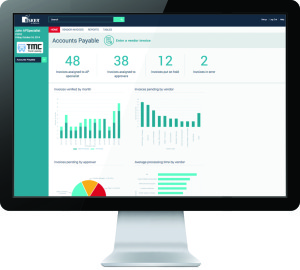 Health, and more precisely, measuring your health, is the new craze. With Microsoft recently launching its new tracking wearable device Band, people can track and measure dozens of parameters related to their activities and their health. Already most runners and cyclists use applications such as RunKeeper and Strava to track, measure, map and analyse their runs and rides. And then there is the social aspect of sharing your data with your friends as these applications also come with a Facebook style website where you can follow other people, share your data, compare your activities and performance against yourself and others, and even share pictures.
Health, and more precisely, measuring your health, is the new craze. With Microsoft recently launching its new tracking wearable device Band, people can track and measure dozens of parameters related to their activities and their health. Already most runners and cyclists use applications such as RunKeeper and Strava to track, measure, map and analyse their runs and rides. And then there is the social aspect of sharing your data with your friends as these applications also come with a Facebook style website where you can follow other people, share your data, compare your activities and performance against yourself and others, and even share pictures.
So how does this trend impact the traditional Accounts Payable (AP) process? Clearly paper-based AP processes do not allow for much tracking and measurement. Of course, one could manually and painfully record the date of reception of a paper invoice and the date when the invoice data was entered into the company’s ERP and by whom. Similarly one could record the time it takes for each invoice to complete the coding and approval workflow. Although some tracking and measurement are possible, barely any company invests time and resources to do so with their paper-based AP processes.
Since the Global Financial Crisis companies have focussed on cost reduction as growth has significantly slowed down in many industries. Those companies reviewed many of their internal processes and targeted their back office operations that involved plenty of manual and paper-based processes.
Accounts payable automation solutions help reduce operational costs via improved productivity of AP officers, the elimination of manual processes, the introduction of digital workflow and electronic archiving.
Digitalised business processes provide the perfect conditions for on-going tracking and measurement of the ‘health’ of the processes. Since each step, each activity is automatically recorded by the software solution then this data can be made available through dashboards and reports.
No need to equip all AP officers with a Microsoft Band though. An AP automation solution constantly tracks and measures all AP key performance indicators (KPIs) and provides the data via dashboards for real time monitoring of the AP process and reports for in-depth analysis.
Moving from a manual and paper-based AP process to a digitalised and automated AP process creates the opportunity for management to implement clear KPIs for AP officers and for the overall AP process. And since it is well known that ‘you can’t manage it if you can’t measure it’, then the new capabilities of tracking and measuring KPIs allow management to drive further productivity and business process efficiency. It’s no coincidence that the highest performing AP departments are exceptional in the very areas that automation is known to improve.
Here are some KPIs typically used to track the health of your AP processes and the benefits you can achieve. These KPIs are time consuming to measure in a manual paper-based AP process and readily available with an automated AP solution:
- Measure the number of invoices processed by each AP officer. This metric can change significantly after automating your process. It also helps identify any further training need.
- Measure the processing cost of each invoice. Start to add up such costs for just one invoice, and you have yourself one expensive AP process.
- Measure the timeliness of your payments. You want to have a good relationship with your vendors so that you can be in a good position to negotiate, get discounts and avoid penalties.
- Are you entitled to any discounts for early payments? Then measure your captured discounts.
- Measure your level of automation already implemented. Sorry, email doesn’t count as automation…
- How many invoices do you pay twice or multiple times? With automation, this figure will be down to zero.
- Calculate the percentage of duplicate invoices received (and hence not processed twice and, more importantly, not paid twice).
After assessing the health of your current AP process with these 7 KPIs, you might want to improve them by automating your AP process. As you follow the way to automation, you will be able to use this first assessment to measure your progress. Indeed, you can compare your KPIs before automation and with automation. Dashboards and reports integrated in your AP automation solution will help you do so.
 Dashboards provide every user (AP officer, AP Manager, Finance Director, CFO) with readily available information needed to perform their daily tasks, monitor performances, and spot problems or opportunities as soon as they arise, making every action smarter and more effective.
Dashboards provide every user (AP officer, AP Manager, Finance Director, CFO) with readily available information needed to perform their daily tasks, monitor performances, and spot problems or opportunities as soon as they arise, making every action smarter and more effective.
Users can effortlessly access the right information when they need it. Packaged KPIs and dashboards remove headaches for IT. Based on best practices and industry standards, these metrics perfectly meet the needs of AP workflow users.
Looking for additional, more specific indicators? Choose a solution with an easy-to-use interface that allows you to choose what you want to display and to which user or profile. And, you are free to remove, edit or add other indicators to your dashboards. Reports can be run or scheduled to see how many pending invoices are waiting to be processed and how much cash they account for. Vendor invoices reports (e.g., invoices pending approval, invoices by status, number of invoices processed by full-time employees, etc.) can be run from the interface, along with the option to build your own reports.
You can also automatically provide regular reporting to managers. You only need to define when, at what frequency, and to whom a report needs to be automatically emailed. Remember, “If you can’t measure it, you can’t manage it.”
These 7 essential KPIs, combined with dashboards and reports, will help you effectively manage your Accounts Payable processes.
